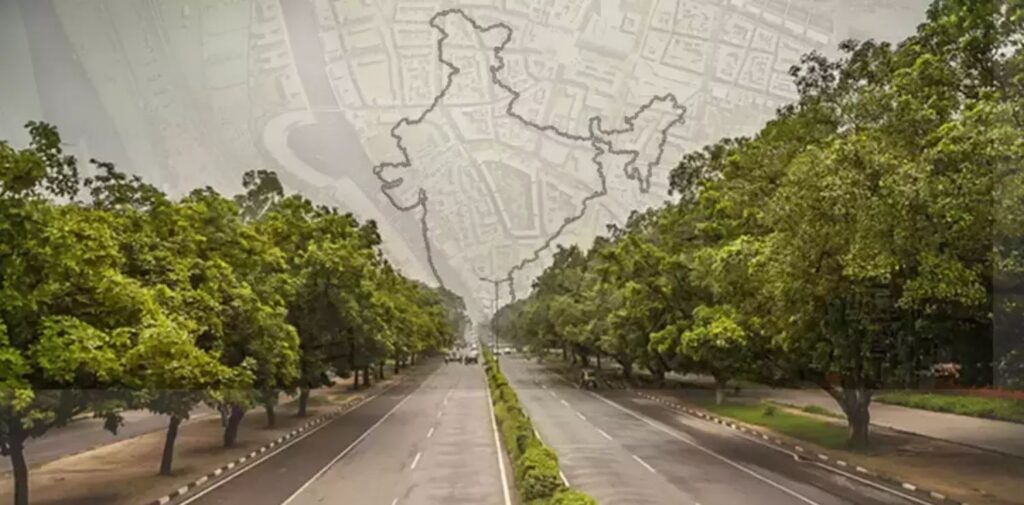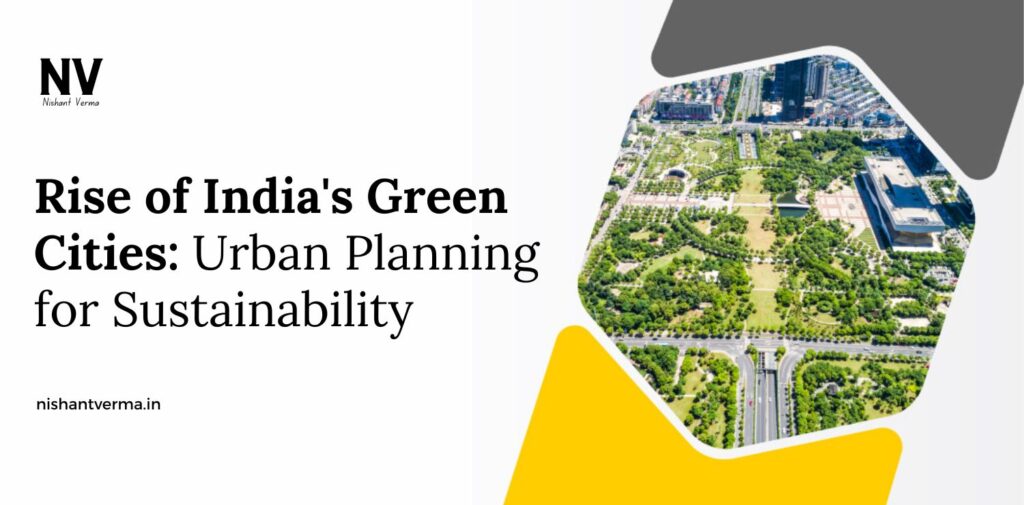India, with its rapidly growing urban population, is witnessing a transformation in its cities, with a rising emphasis on sustainability and green urban planning. In the face of climate change, pollution, and a growing demand for resources, many cities across India are now focusing on becoming “green cities.” These cities aim to provide a better quality of life to their residents while also promoting environmental protection and economic growth. This article explores the rise of India green cities, how they are being planned, and the role of sustainable urban development in shaping the future of the country.
The Need for Green Cities in India
India’s urban population has been growing at an unprecedented rate. According to the United Nations, more than 34% of India’s population lived in urban areas in 2020, a number expected to rise to 40% by 2030. This urbanization, while a sign of economic growth, has come with a set of challenges, including overcrowded cities, pollution, water scarcity, and traffic congestion. As cities expand, the need for sustainable solutions to these problems has become more critical than ever.
A green city is not just about planting trees and having parks; it is about creating a balanced and sustainable environment. This involves incorporating eco-friendly practices, energy-efficient infrastructure, waste management, renewable energy, and green spaces into urban planning. In India, the idea of green cities is gaining traction as more people realize the importance of reducing the environmental impact of urbanization while improving the quality of life.

Key Features of Green Cities in India
Green cities in India are characterized by several key features that make them more sustainable, livable, and eco-friendly. These features go beyond just building infrastructure; they aim to create environments that support both human life and the planet.
One of the core components of green cities is the promotion of renewable energy sources, such as solar and wind power. India has made significant progress in solar energy over the past few years, and many cities are adopting solar panels for public buildings, streets, and homes. This shift not only reduces dependence on conventional energy sources but also helps in minimizing carbon emissions, making the city more energy-efficient.
Another important feature is the focus on public transportation. To reduce traffic congestion and air pollution, cities are investing in efficient and sustainable modes of transport, such as electric buses, metro rail systems, and bicycle-sharing programs. By encouraging public transport and non-motorized forms of transportation, such as walking and cycling, green cities are reducing the number of private vehicles on the road and promoting cleaner air.
Green spaces, such as parks, gardens, and rooftop plantations, are also a hallmark of green cities. These spaces improve air quality, reduce the urban heat island effect, and provide recreational areas for residents. Many Indian cities are now integrating green spaces into their urban design, ensuring that there is a balance between built infrastructure and nature.
Sustainable water management is another critical feature of green cities. In a country like India, where water scarcity is becoming a pressing issue, cities are adopting measures like rainwater harvesting, water recycling, and efficient irrigation systems to conserve water. By using water resources wisely and promoting conservation, green cities are preparing themselves for a future with less water stress.
Waste management is another key area where green cities are making strides. Proper waste segregation, recycling, and composting are becoming integral parts of urban planning. Cities like Indore and Pune have set examples with their waste management initiatives, which focus on reducing, reusing, and recycling waste, contributing to a cleaner and greener environment.
Government Initiatives and Policies
The rise of green cities in India has been supported by various government policies and initiatives. The Indian government has recognized the importance of sustainable urban development and has taken several steps to promote green cities.
The Smart Cities Mission, launched in 2015, aims to transform 100 cities across India into smart, sustainable urban centers. The mission emphasizes the development of green infrastructure, efficient use of resources, and the adoption of technology for better urban management. Under this mission, many cities have adopted green building standards, renewable energy sources, and eco-friendly transport systems.
The Atal Mission for Rejuvenation and Urban Transformation (AMRUT), launched in 2015, is another initiative that focuses on providing basic infrastructure and improving urban services in cities. Through this program, the government aims to enhance the green cover, improve waste management, and ensure better water supply and sewage systems in cities.
Additionally, the National Action Plan on Climate Change (NAPCC) outlines the steps India plans to take to reduce carbon emissions and mitigate the effects of climate change. One of the key components of the NAPCC is the National Mission on Sustainable Habitat, which encourages sustainable urban planning and green infrastructure development.

Successful Green Cities in India
Several Indian cities have already made significant progress in their journey toward becoming green cities. These cities are serving as models for sustainable urban planning and offer valuable lessons for other cities to follow.
Indore, the cleanest city in India as per the Swachh Survekshan rankings, is an excellent example of a green city. The city has invested in efficient waste management practices, such as door-to-door waste collection and segregation, composting, and the creation of a solid waste processing plant. The city also has a strong focus on water conservation, with the implementation of rainwater harvesting systems and water recycling.
Pune, another prominent city, has been a pioneer in implementing sustainable urban practices. The city has adopted a green building policy and has integrated renewable energy sources, such as solar panels, into public infrastructure. Pune is also investing in eco-friendly public transport options, including electric buses, to reduce its carbon footprint.
Chandigarh, known for its well-planned layout, has incorporated green spaces, energy-efficient buildings, and water management systems into its urban planning. The city also focuses on sustainable waste management practices, including segregation, recycling, and composting, making it a role model for other cities in India.
These cities, along with others like Bangalore, New Delhi, and Ahmedabad, are actively working toward reducing their environmental impact while enhancing the quality of life for their residents.
Challenges in Building Green Cities
While the rise of green cities in India is promising, there are several challenges that need to be addressed. One of the biggest hurdles is the lack of awareness and understanding of sustainable practices among the general public. Many residents still prefer traditional ways of living and are reluctant to adopt eco-friendly practices like waste segregation, composting, or using public transport.
Another challenge is the lack of infrastructure and investment in many cities. Despite government policies, many cities still lack the necessary infrastructure for implementing green initiatives. For example, sustainable public transport systems are expensive to build and maintain, and many cities struggle with funding these projects.
Additionally, urban sprawl and rapid population growth are putting pressure on resources, making it difficult to achieve a balance between development and sustainability. In many cities, land for green spaces is limited, and the demand for housing and infrastructure often leads to the destruction of natural habitats.

The Way Forward for India Green Cities
The future of India green cities lies in the integration of sustainability into every aspect of urban planning. To overcome the challenges, it is crucial for the government, businesses, and citizens to work together toward creating a more sustainable urban future.
One important step is increasing awareness about the benefits of green cities and encouraging citizens to adopt eco-friendly practices. Education and community engagement will play a vital role in making people more conscious of their environmental impact and inspiring them to take action.
Investing in smart technologies and sustainable infrastructure will also be key to building green cities. This includes adopting renewable energy sources, improving public transport, and developing energy-efficient buildings. Smart cities should incorporate the latest technologies, such as the Internet of Things (IoT), to monitor and manage resources more effectively.
The government must continue to support green urban planning through policies that encourage sustainable practices and provide financial incentives for businesses and individuals who contribute to the green economy. Public-private partnerships will be essential in providing the funding and expertise needed to scale up green initiatives.
Conclusion: Rise of India Green Cities
The rise of India green cities is an encouraging sign that the country is moving toward a more sustainable future. With the right policies, investments, and public participation, Indian cities can lead the way in creating urban environments that are not only eco-friendly but also economically vibrant and socially inclusive. As more cities embrace sustainable urban planning, India will be well on its way to achieving a greener, healthier, and more livable future for all its citizens.




